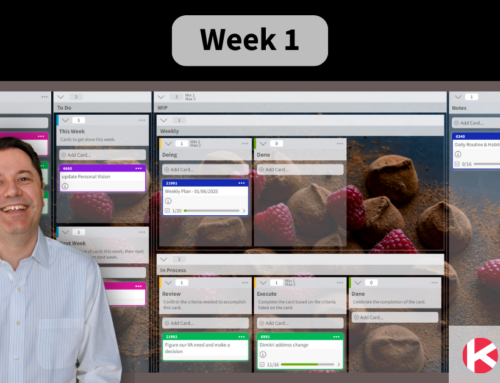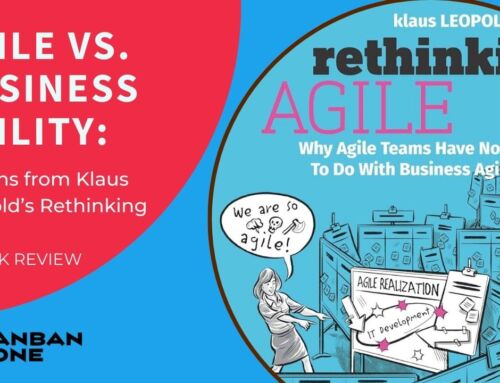
As an Agile practitioner, I get this question a lot. Everyone has heard of SCRUM and often interchange the words Agile and SCRUM. They are in fact, different things.
Back To Basics
Agile is a way of thinking, a way you go about your everyday work and is based on the Agile Manifesto. You do not DO Agile, you BECOME Agile. This is a very significant difference and helps set the right mindset. Becoming Agile is a mindset shift. The Agile Manifesto consists of 4 Values. A value is a deep belief. If you believe in the 4 Values of the Agile Manifesto, then you can become agile.
Individuals and Interactions over Processes and Tools
Working deliveries over Comprehensive Documentation
Customer Collaboration over Contract Negotiation
Responding to Change over Following a Plan
To help us apply our agile mindset, sometimes we choose a framework like SCRUM, Kanban or even Scrumban to help teams work together in a consistent process. The goal is to have teams work together quickly and efficiently.
Kanban
Kanban is one of these frameworks that can be leveraged to apply our Agile values. Kanban also has its own set of 5 core properties to help guide teams to work together by flowing work through a defined process.
1. Visualize your Work
When a team chooses to leverage Kanban to become Agile, they start by building a board to visualize their defined process. Kanban boards are unique to a team. Boards should be flexible to allow a team to visualize their process to maximize their efficiency.
2. Limit Work In Progress (WIP)
WIP is how a Kanban team controls its available capacity. With no timebox, all work is due ASAP. Each board sets a limit of active cards (work items) which the team agrees to respect. The goal is to finish what you start before taking on more work and become productive.
3. Measure and Manage the Flow
Once a team establishes a way of working using their board as a guide, we must measure the flow of cards (work items) on the board. Work STARTED shows the team is busy (with respect to their WIP limits). Work COMPLETED shows the team is productive.
Throughput – The number of cards a team completes within a time period. This is the team’s delivery rate.
Cycle Time – The average time per card from work start to completion.
With these 2 key measurements, a team can forecast upcoming work and answer questions like:
When will it be done? How much is it going to cost?
4. Make Process Policies Explicit
In order to promote a smooth flow of cards through a Kanban board, team members must clearly understand and agree on the rules of when a card can move on the board to the next step in the defined process. These are called explicit agreements.
Each column on the Kanban board the team builds has clear policies so that all team members know what needs to be done within the column. Without a clear policy of when a card can exit the current column and be pulled into the next, a card could be moved too soon and get stuck. When a card gets stuck, the board can backup. Much like water through a pipe, we want the cards to flow through the Kanban board without getting stuck. This is the goal of explicit policies.
5. Improve Collaboratively
No board starts out perfect. All teams experience change. On a regular cadence, a Kanban team collaborates to reflect on their overall process, using their experiences and the measurements they have been tracking, improvements are discussed.
Using their Kanban board much like a Value Stream Map (VSM) the team reviews where they can improve efficiency by eliminating or reducing waste, changing explicit policies, experimenting with different techniques, and automating where they can.
Conclusion
As you can see, by leveraging Kanban, becoming Agile is easy. It takes a group of motivated individuals that agree with the Agile Manifesto, a little discipline, and the drive to continuously improve.
Kanban is Agile.
Learn to Work Smarter, Not Harder!
Get our top articles weekly.
Table Of Contents
Discover many more posts…







